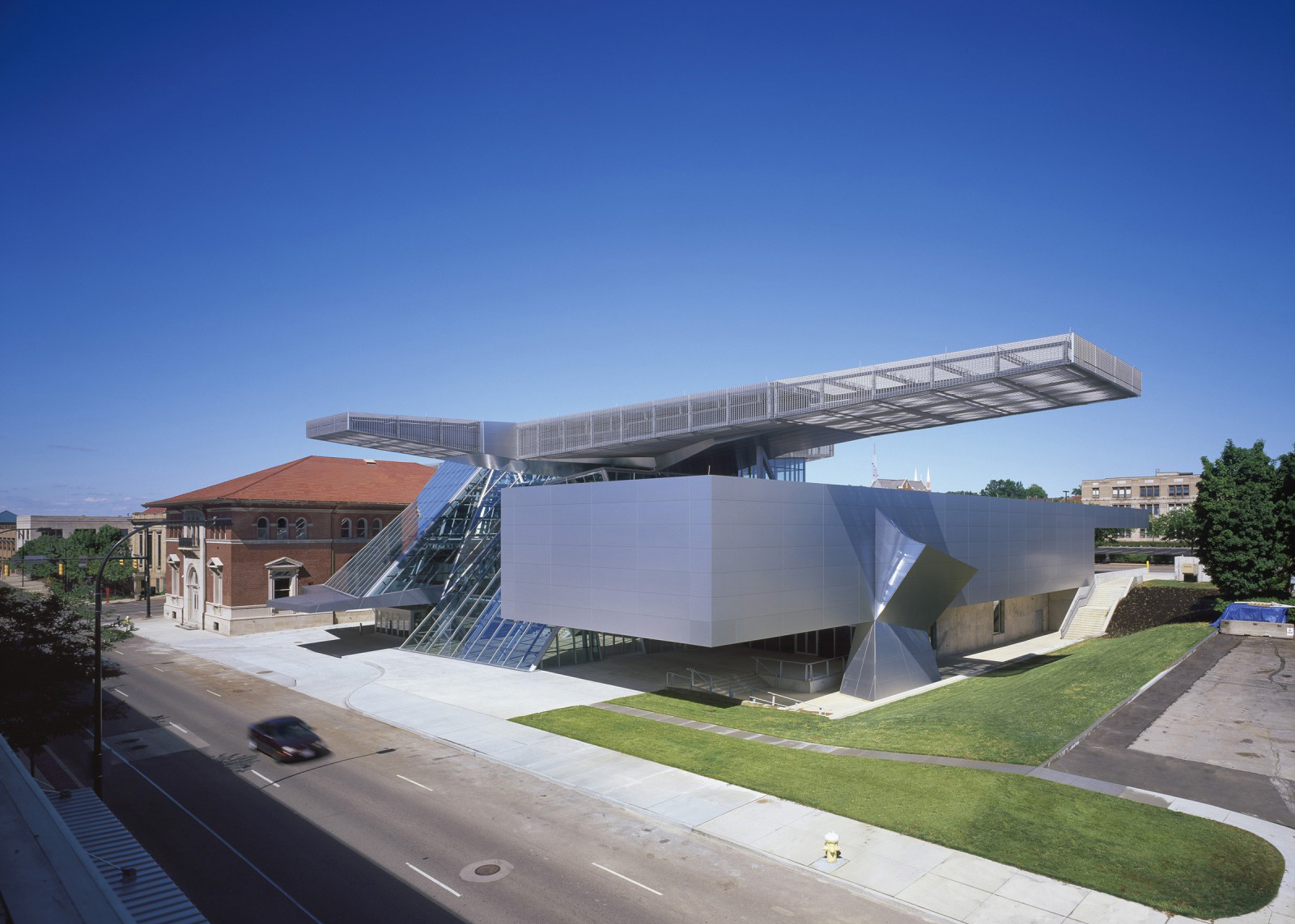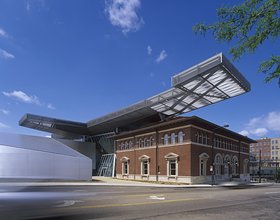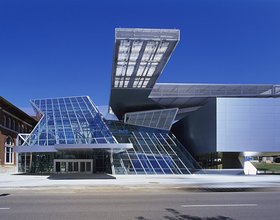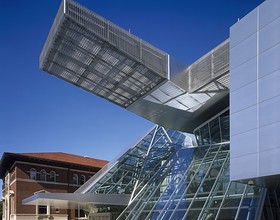AKRON ART MUSEUM
-
The building is broken up into 3 parts: the Crystal, the Gallery Box, and the Roof Cloud.
The Crystal serves as the main entry and operates as an orientation and connection space serving both the new and old buildings. It is a grand, flexible space that can also be used for banquets, arts festivals, and events hosted by outside organizations. The traditional idea of a banquet hall as an enclosed isolated event space dissolves away into a visible, public experience.
The energy necessary for lighting, heating and cooling the Crystal is minimized by strategic building massing and extensive daylighting. The mass and location of the Gallery Box and High Roof protect the southern oriented Crystal glazing from direct sunlight. At the same time the reflectivity of the façade material raises natural light levels in the Crystal and reduces the need to power artificial light sources.
The Crystal utilizes microclimate zones as a heating and cooling concept. These different zones are determined by analyzing the type and anticipated length of occupancy in various areas of the crystal and are conditioned through optimization of active and passive means. By eliminating the need to condition the entire air volume in the Crystal, and by focusing the energy used to condition the space in the areas where people are located, operating costs and energy use are significantly reduced.
The interior of the Gallery Box is an expansive space which has very few columns and is therefore extremely flexible for varying exhibition requirements. A large freight elevator brings oversized works to and from the storage areas and serves as a link between the loading dock and Gallery Box. Natural light is eliminated in the galleries so that it can be strictly controlled and damage from sunlight can be eliminated.
The floors of the Gallery Box and Crystal are composed of poured in place concrete slabs with water filled tubes that supply heating and cooling by changing temperature state of the massive floor slab. This radiant floor system is more efficient than simple forced air systems because it uses the mass of the concrete as a storage device which delivers a stable continuous source of heating and cooling. Forced air systems are much less efficient than radiant systems because of the extra work required by the system when occupancy loads suddenly change and create a far higher burden of use of non-renewable resources.
The Roof Cloud, which hovers above the building, creates a blurred envelope for the museum because of its sheer mass and materiality. It encloses interior space, provides shade for exterior spaces, and operates as a horizontal landmark in the city.
Photo credits: Roland Halbe.
1870 Projects










